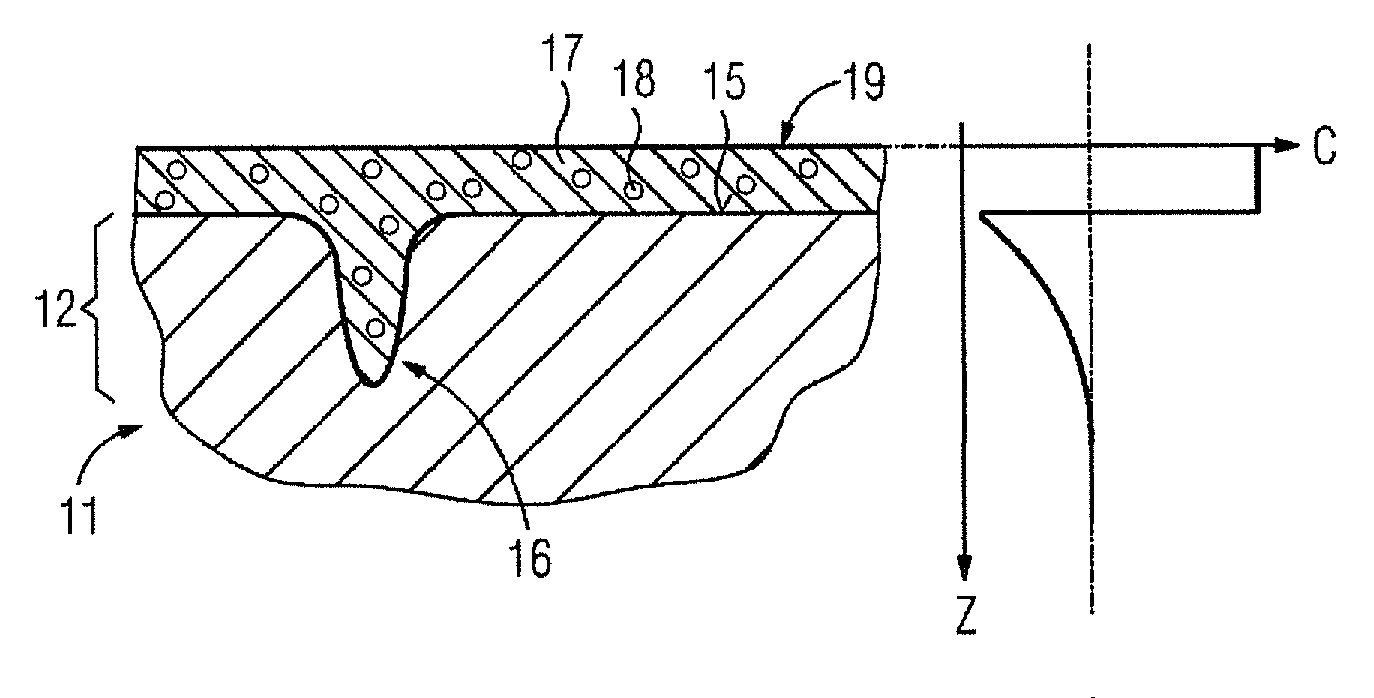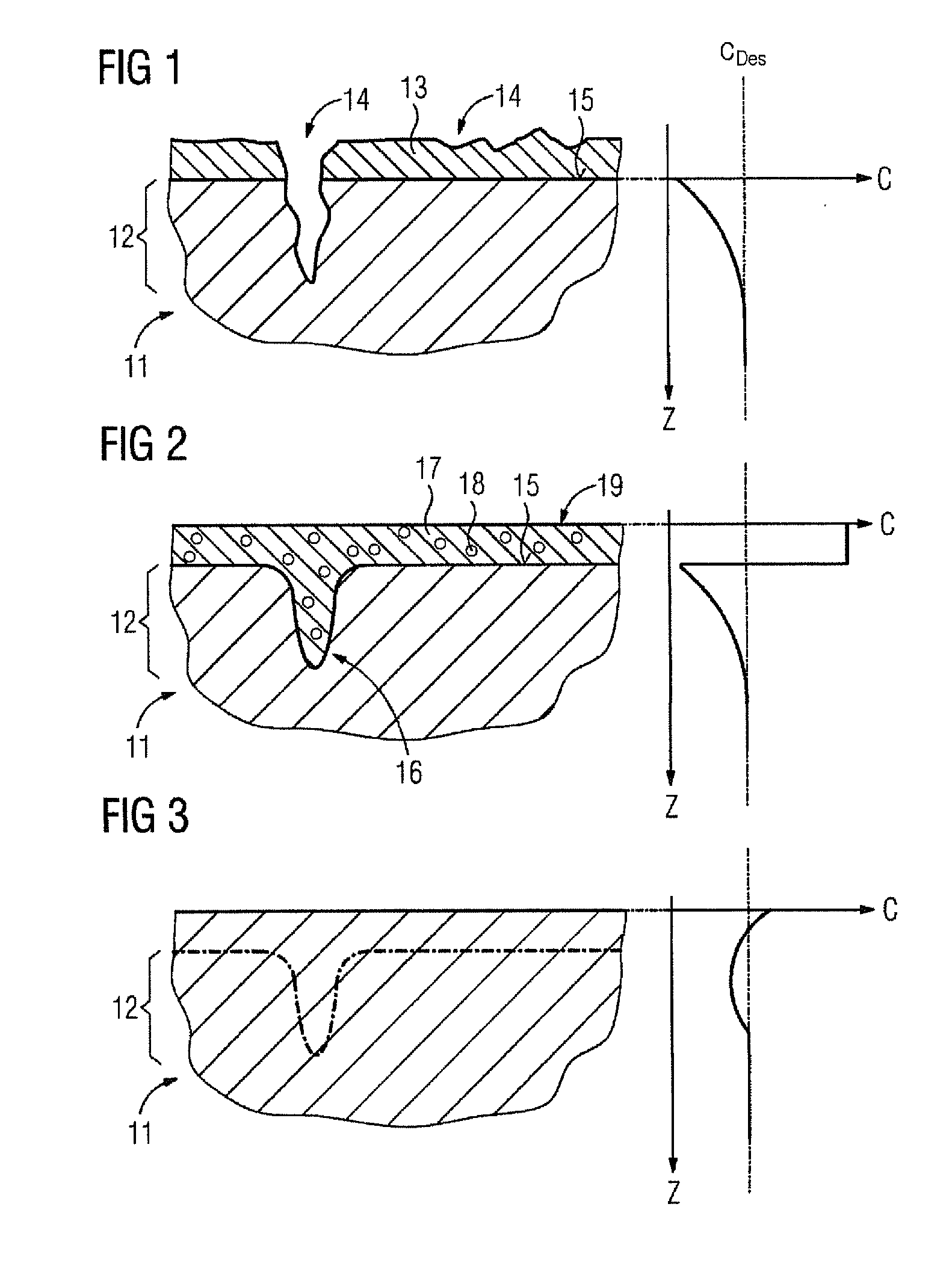Method for repairing a component by coating
- Summary
- Abstract
- Description
- Claims
- Application Information
AI Technical Summary
Benefits of technology
Problems solved by technology
Method used
Image
Examples
Embodiment Construction
[0022]A component 11 as shown in FIG. 1 is a turbine blade formed by an MCrAlY alloy. The figure shows a region 12 near the surface of the turbine blade which has a coating 13. By way of example, this may consist of a thermal barrier coating (TBC), this layer serving to thermally protect the turbine blade. The region 12 near the surface of the component 11 can itself represent a layer on a base body (not shown in more detail), it also being possible to produce the blade in solid form from the MCrAlY alloy.
[0023]FIG. 1 also shows damaged locations 14 which may consist, for example, in abrasive wear on the surface or a crack. In addition, a graph which is true to scale with respect to the illustration of the component 11 plots the concentration of a specific microstructural proportion C against a path coordinate z which indicates the distance to the surface 15 of the uncoated component 11. By way of example, the specific microstructural proportion may be the aluminum content of the MC...
PUM
| Property | Measurement | Unit |
|---|---|---|
| Temperature | aaaaa | aaaaa |
| Concentration | aaaaa | aaaaa |
| Microstructure | aaaaa | aaaaa |
Abstract
Description
Claims
Application Information
 Login to View More
Login to View More - R&D
- Intellectual Property
- Life Sciences
- Materials
- Tech Scout
- Unparalleled Data Quality
- Higher Quality Content
- 60% Fewer Hallucinations
Browse by: Latest US Patents, China's latest patents, Technical Efficacy Thesaurus, Application Domain, Technology Topic, Popular Technical Reports.
© 2025 PatSnap. All rights reserved.Legal|Privacy policy|Modern Slavery Act Transparency Statement|Sitemap|About US| Contact US: help@patsnap.com


